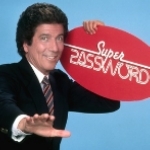Are You Sick of Windows?
By Bob Rankin
Sick and tired of trying to learn Windows 8? Bob Rankin explores a few alternatives.–PC Pitstop
Windows 8 is attempting to be a better alternative to old-school Windows. But it’s scaring off a lot of consumers who see a trusted, familiar face now radically transformed into something alien and confusing. One may as well consider other operating systems if there’s going to be a learning curve anyway. Here are several alternatives to running Windows on your desktop, laptop or mobile device…
Alternatives to Windows
You may have known no other personal computer operating system besides Windows, if you are a typical consumer/home user. But other alternatives are becoming well-established in consumer computing devices such as smartphones and tablets. People are becoming accustomed to the ways of non-Windows operating systems, and with ease-of-use of alternatives may come the realization that something is actually better than Windows. Or that it just doesn’t matter.
Of course, you can always cling to your current version of Windows as long as possible. Microsoft support for Windows XP will end completely on April 18, 2014; that means not even security and vulnerability patches will be provided. Support for Windows 7 will start to be scaled back on January 13, 2015. For complete details on the end-of-support schedules for all Windows versions, see my article, Still Holding On To Windows XP?
If mobility is the future of your computing, then your alternatives to Windows are Apple iOS and Google Android. The iPhone and the iPad are Apple’s very popular smartphone and tablet offerings. They run the iOS operating system, which is noted for simplicity, but not so much for flexibility. Android smartphones and tablets are available from a myriad of vendors in all sorts of configurations. Some of the most popular now are the Samsung Galaxy series, the Motorola Droid RAZR, Amazon Kindle Fire, and the Google Nexus tablet.
Because Android was designed to be open, flexible, and modifiable, it is typically molded or “skinned” to suit the whims (and business goals) of the vendor or wireless carrier that offers the device. For example, the look and feel of the Android OS running on the Kindle Fire is rather different from that of the Samsung Galaxy S4. But under the hood, 99% of the code is the same.
Excerpt shared with permission from Bob Rankin.




